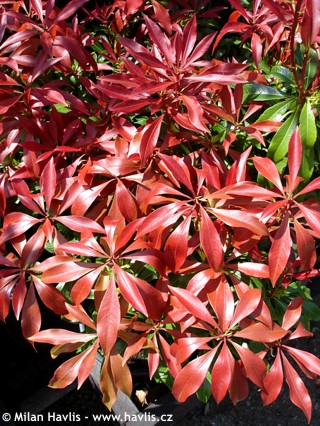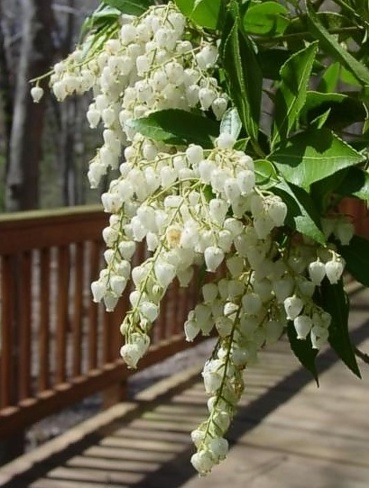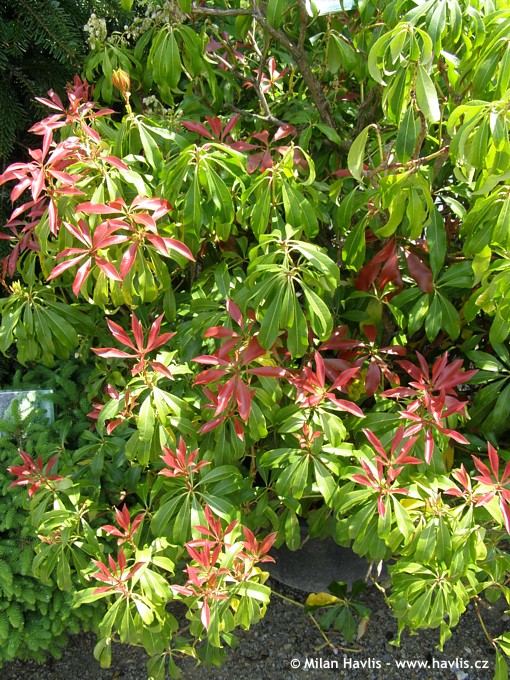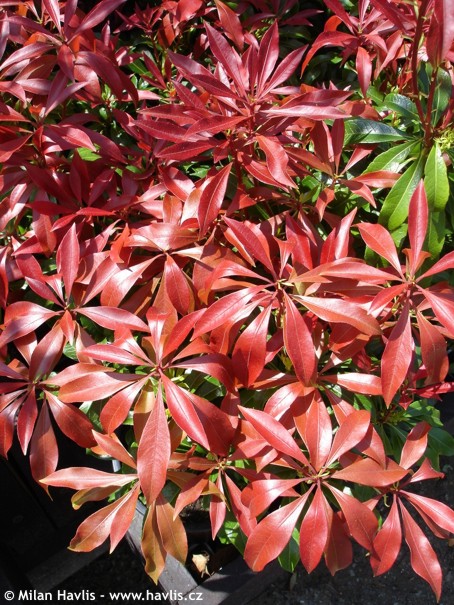Pieris japonica 'RED MILL' lily of the valley bush


This variety of lily-of-the-valley shrub called Red Mill is one of the hardiest. Early in the spring it has tiny white flowers in pendent racemes, so loved by bumblebees. They are urn-shaped and small enough to enable bees suck their nectar, too. Soon after flowers new leaves appear. They emerge bright red first, turning mahogany, and mature into dark green in summer. Flower buds appear already in autumn of the previous year and decorate the plant throughout winter. Red Mill grows slowly into a compact, bushy shrub which looks especially great among other all-green shrubs and conifers.
Pieris does not require much maintenance. But if you wish to have a perfect plant here are a few suggestions: cut off spent flower racemes to prevent them from making seeds. During late spring and summer check the leaves 2 or 3 times for tiny spots on the upper sides – they manifest insect attack whose miniature worms are living inside the leaves and produce sticky sap on the underneath of the leaves. In such case spray it with a suitable insecticide – one dose is usually enough. In winter remove heavy and wet snow from the top of the plant to prevent its fragile branches from bending or breaking.
Ericaceous plants require soil that is light, acidic, and constantly moist (not wet). If your garden soil is too heavy do not dig a deep hole but make a mounded and wide bed topped up with a good mixture of peat, fine bark chips, and leaf (forest) litter. Keep the soil moist by mulching. Slow-release fertilizers for acid-loving plants are advised. It is hardy to about -29°C (USDA zone 5) and suitable for outdoor pots.
Last update 15-11-2016






































